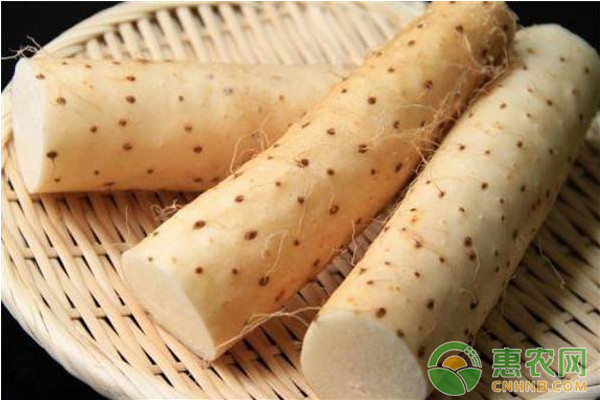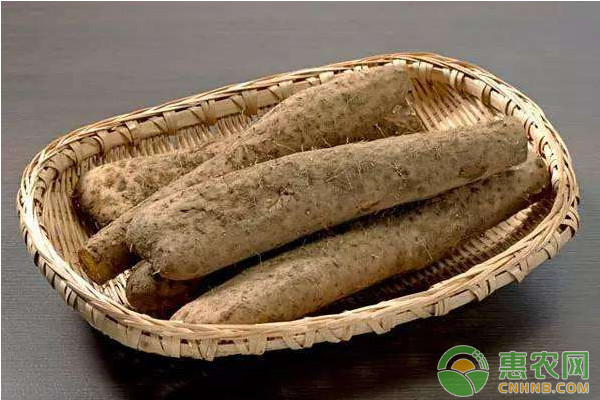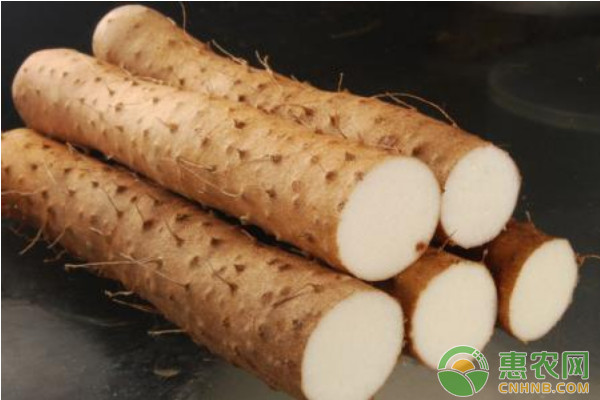Yam is a food with high medicinal value, which can be used as food or as medicine. The existing experts sort out the technical points of yam cultivation as follows, and farmers who have needs can refer to them. 1 Choose a cultivation site Yam is a deep-rooted crop that requires deep soil layers, loose soil, and well-drained sandy loam. Yam is more drought-tolerant and afraid of phlegm. It should be selected from sandy loam with slightly higher ground, deep soil, fertile and loose drainage, and well-drained. Where soil is sticky or sandy and where low water is easy to accumulate, it is not suitable for planting. 2 breeding seeding 2.1 Yam bean reproduction When the yam stems and leaves were yellow in the previous year, the yam beans with full and no pests and diseases were selected and stacked in the dry sand indoors. In winter, the indoors should be kept above 5 °C, and the seeds should be taken out in the spring of the second year. 2.2 Reed propagation Generally, in late October, when the stems and leaves of yam are yellow, the roots of the roots are excavated, and the head of the head (the section with buds at the upper end of the root) is removed as a propagation material. The neck is short, the head is thick, and there is no pest or disease. ~15cm of the head of the reed head is placed in the ventilation place for 4 to 5 days, the section is healed, and then 30 pieces are bundled with straw rope and placed in a dry kiln for storage. You can choose a corner inside the house, first layer a 15cm thick river sand, which is covered with a layer of reed, and then layered with a river sand about 10 cm thick, so that it is layered to 80-100cm. Yes, finally, use a layer of slightly damp fine sand to cover the top, covered with a layer of straw, to keep warm and moisturizing. During the storage of the layer, the room temperature is maintained between 0 and 10 ° C, below 0 ° C, the head is easy to freeze, above 10 ° C, the head is easy to germinate and even rot. Store until the spring of the second year. 2.3 Soil preparation and fertilization After selecting the yam cultivation site, the soil is deeply turned over after the autumn, and the depth is more than 60cm. After the spring thawing in the second year, combined with the preparation of the ground, 5000kg of compost compost is applied per 667m2, and then ploughed for about 30cm, then the tillage is smoothed and flattened. It is a 1.3m high sorghum or high ridge, and a 30cm wide drain is opened on both sides for drainage. In order to control underground pests, 15 g of 40% phoxim granules were applied per 667 m2 for soil disinfection. 2.4 Suitable sowing When the ground temperature in the spring (mid-April) is stable through 9 to 11 °C, choose to plant in sunny days. Ditching before sowing, the ditch depth is 8~10 cm, the planting distance is 16cm×40cm, the yam bean is 10cm×25cm, the soil is 6~7cm, and the layer is covered with manure or compost. Really, protect against water stains. 3 Fertilizer management Yam is more resistant to fertilizer. Each 667m2 can be used for high-quality rotted human and animal waste 5000kg, compound fertilizer 100kg, or 50kg per 667m2, 200kg of cooked oil residue, 150kg of ash, and deep into the soil. Combine loose soil and weed grass before the truss, and apply 800kg of decomposed manure per 667m2. After the small heat, apply 15-20 kg of urea per 667 m2, and spray 0.3% potassium dihydrogen phosphate on the foliage. If it is dry during the growing period, it should be watered in time; in the rainy season, it should be drained, waterproof and floodproof. 4 timely scaffolding When the yam seedlings grow to about 25cm, they will be erected in time. The length of the pole is about 2m. 5 pest and disease control 5.1 Weeding for 3 times weeding, the first time after the seedlings are unearthed, it can be shallowed once. Do not damage the head or plant it. The second time in the middle and late June, the stems are squatted before the shelf, the third time at the end of July. After the stems are put on shelves in early August, weeds should be removed by hand. After sealing, weeding and loosening should not be carried out. 5.2 Anthrax disease prevention Anthracnose occurred heavier in July-August, and there were small spots on the affected stems and leaves, which were irregularly rounded, with small black spots on them. When the disease was heavy, it caused dead stems and fallen leaves. In the early stage of the disease, it can be sprayed with 65% dasen zinc wettable powder 500 times liquid spray, sprayed once every 7 to 10 days, and even sprayed 2 to 3 times. 5.3 White rust prevention White rust occurs during the rainy season from July to August. At the beginning of the affected stems and leaves, there are pale yellow spots, which turn into milky white mites that are outwardly pocketed. Finally, the epidermis of the lesions ruptures and emits white powder. When the damage is serious, the stems and leaves are withered. Control method: The cultivation area should not be too wet, pay attention to drainage after rain, and avoid rotation with cruciferous vegetables. In the early stage of the disease, spray 1:1:100 Bordeaux mixture or 65% Dyson zinc wettable powder 500 times solution. 5.4 Prevention and control of nematode Nematodes damage the roots of yam underground roots, and many small mites of different sizes grow, making yam unable to develop normally, affecting yield and quality. In the prevention and control, the soil preparation can be combined with 40% phoxim granules or 3% methyl isothiophos granules per 667 m2 for soil disinfection to avoid the use of plants infected with pests and diseases. Before planting, the head or plant is soaked in 1:1:150 Bordeaux mixture for 10 minutes. 5.5 Leaf bee, cockroach, ground tiger Underground pests (蛴螬, tiger) damage the roots of Chinese yam, affecting the growth of yam, resulting in lack of seedlings, ridges, and reduced production. It can be controlled by pyrethroid pesticides and trichlorfon. 6 timely harvest Before and after the "frost drop", the stems and leaves can be excavated until they are yellow. First harvest the bead buds, then remove the scaffold, cut the stems, and dig out the underground roots. Be careful when digging, pay attention to keep the yam block intact. After digging, first remove the reed head for planting, and the roots are processed into medicinal materials. The buds, ie, the yam beans, are dried immediately after collection, and are broken into pieces when used. If used as a propagation material, it should be stored in dry sand immediately. The above is the technical point of yam cultivation. Friends who need to learn can come to Huinong.com to check more. Welcome everyone to continue to pay attention! Sweeteners Fruit Powder,Luo Han Guo Extract,Natural Sweetener Monk Fruit Extract,Juice Powder Extract Sweet Fruit Juice Fufeng Sinuote Biotechnology Co.,Ltd. , https://www.sntextract.com


How can yam be grown to achieve high yield? Main points of high-yield planting management techniques